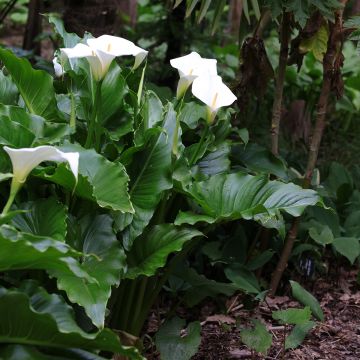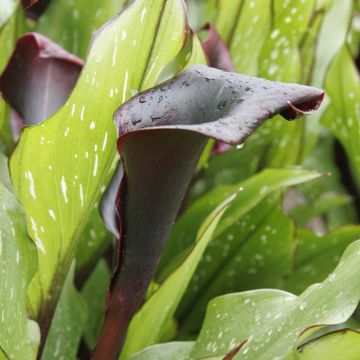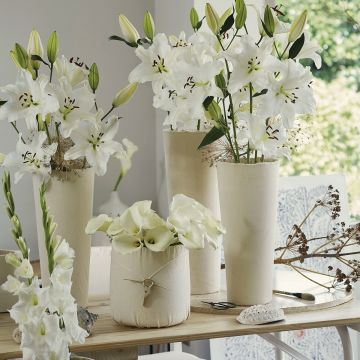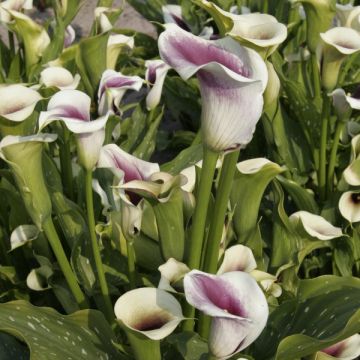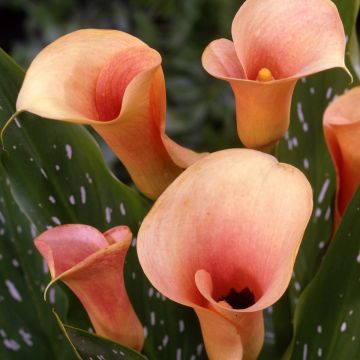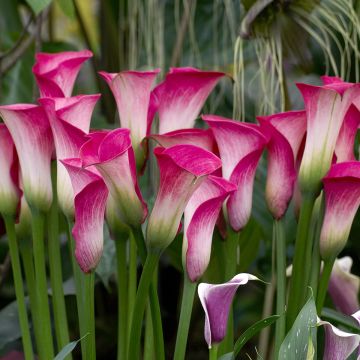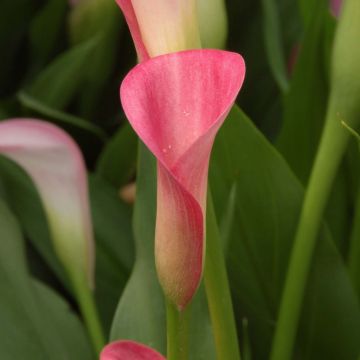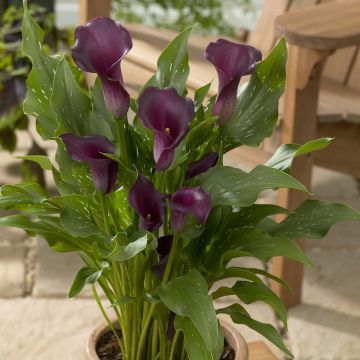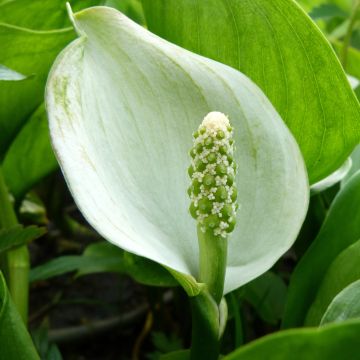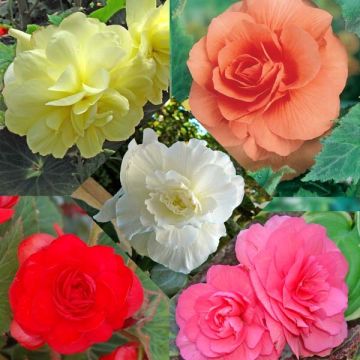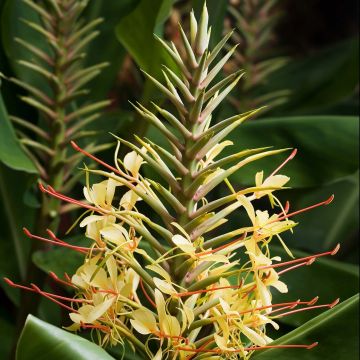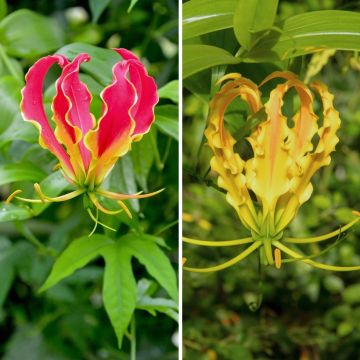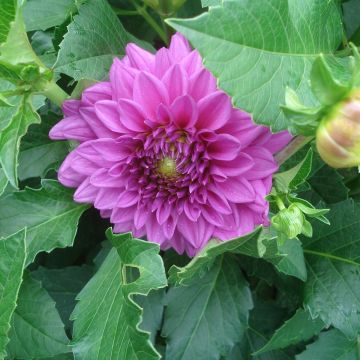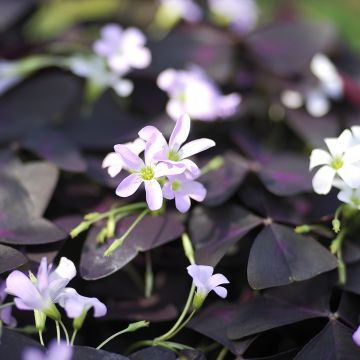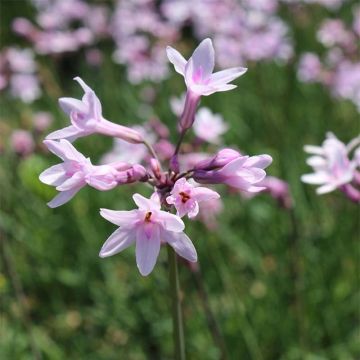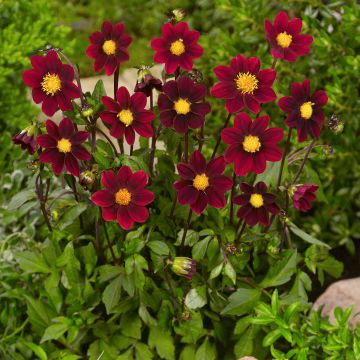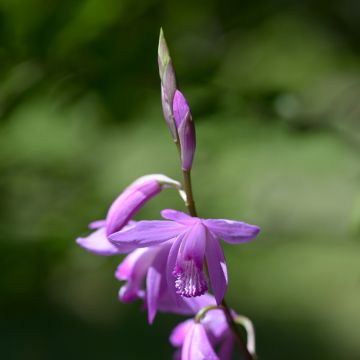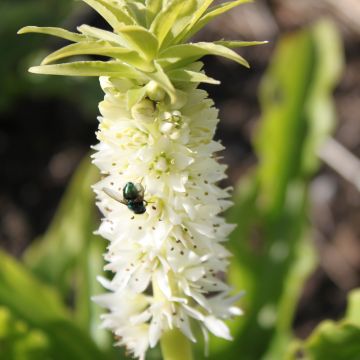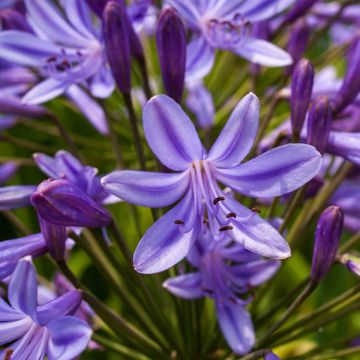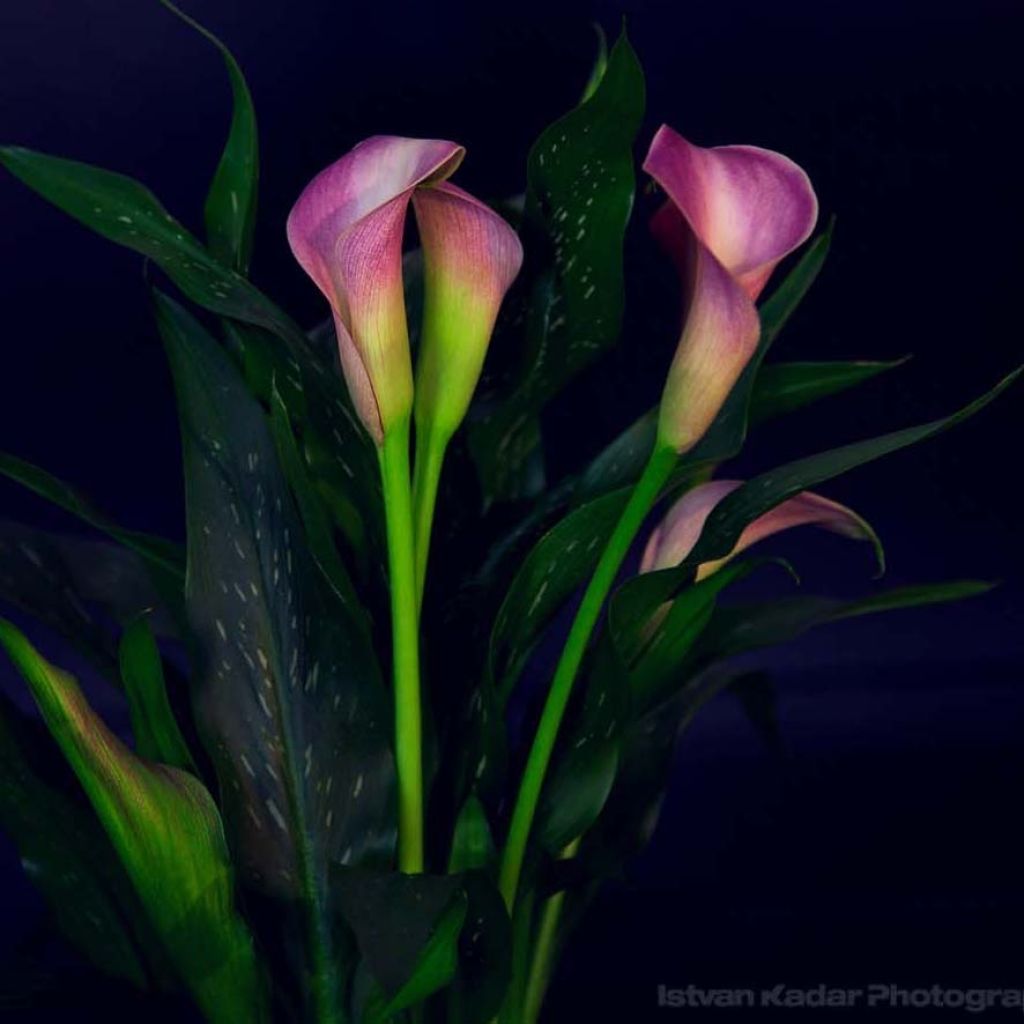

Zantedeschia elliottiana Lavender Gem - Calla Lily
Zantedeschia elliottiana Lavender Gem - Calla Lily
Zantedeschia x elliottiana Lavender Gem
Golden Calla Lily, Yellow Calla Lily, Elliott's Calla
Three bulbs planted in a pot. Two have grown and formed very beautiful flowers, with a superb original colour. One of the bulbs did not grow.
Laura, 02/07/2021
This item cannot be shipped to the selected country
Delivery charge from €5.90
More information
Schedule delivery date,
and select date in basket
This plant carries a 6 months recovery warranty
More information
We guarantee the quality of our plants for a full growing cycle, and will replace at our expense any plant that fails to recover under normal climatic and planting conditions.
From €5.90 for pickup delivery and €6.90 for home delivery
Express home delivery from €8.90.
Does this plant fit my garden?
Set up your Plantfit profile →
Description
Zantedeschia or 'Lavender Gem' Calla Lily is a variety of romantic and precious florists' Arum, with a delightful long-lasting lavender mauve flowering in a vase. Its satin-textured spathes emerge in summer from elegant foliage, glossy green, sometimes speckled with silver-white. Charming and unexpected near a body of water, it is best displayed in a pot immersed in shallow water on the terrace for maximum impact. To bloom and thrive, it requires warmth and a soil that is both moist and rich. The non-hardy rootstock should be protected from cold and dampness in winter.
Zantedeschia 'Lavender Gem' is one of the many hybrids obtained by crossbreeding two main species originating from Eastern and Southern Africa, namely Zantedeschia rehmannii and Z. elliottiana. Vegetation emerges from the ground in spring, in the form of large arrow-shaped green leaves, highly decorative outside of the flowering period. They are medium green in colour, glossy, sometimes speckled with white. This Calla Lily is of medium size, measuring between 50 and 60cm (20 and 24in) in height. Like other hybrids, this plant requires specific growing conditions to flower, from June to August. The flower, typical of Araceae, takes the form of a highly ornamental spathe, almost 10cm (4in) in diameter, hiding a small golden yellow spadix at its black centre. The spathe is mauve-pink on the inside, paler on the outside. The thick roots of this Calla Lily penetrate perpendicularly into the growing medium, they are fleshy and trailing rhizomes. In nature, this plant grows in marshes that generally dry up in summer, under year-round warm climates. The vegetation dries up, and the tuber enters a period of dormancy in a fairly dry soil. This vegetative cycle must be strictly respected in cultivation. Florists' Arums can live for many years if the cyclic rest period is well respected.
Zantedeschia 'Lavender Gem' is particularly suitable for pot cultivation, which allows it to be sheltered in winter and control the moisture level of the growing medium. It can also be planted in a cool area, near a body of water, or even partially submerged during flowering. Compose elegant bouquets with its flowers, fern leaves, freesias, or lilies, for example.
Report an error about the product description
Zantedeschia elliottiana Lavender Gem - Calla Lily in pictures
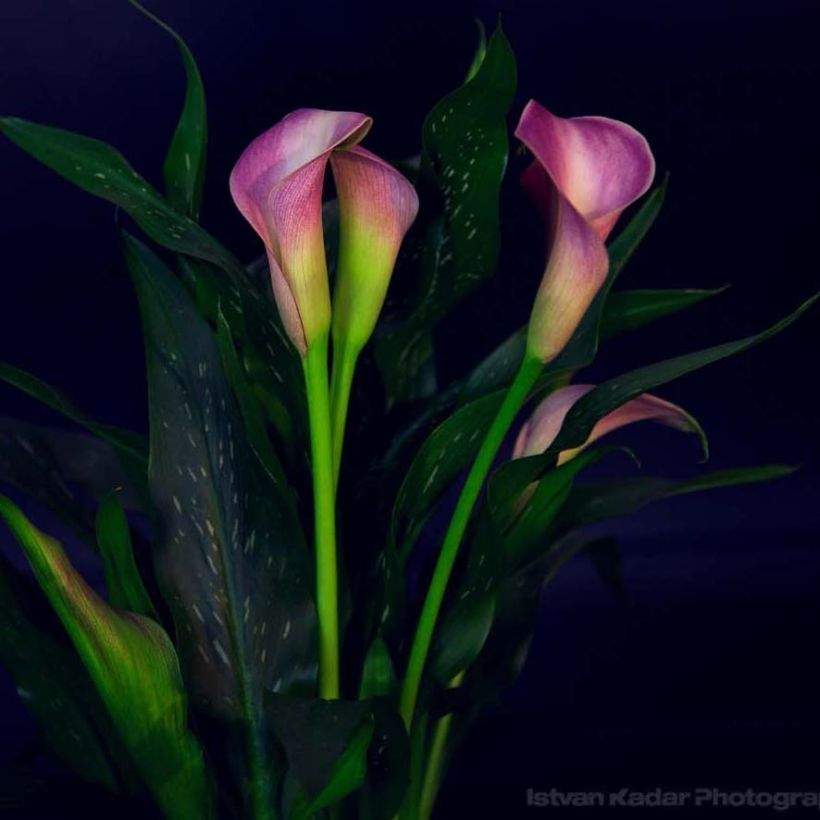

Plant habit
Flowering
Foliage
Botanical data
Zantedeschia
x elliottiana
Lavender Gem
Araceae
Golden Calla Lily, Yellow Calla Lily, Elliott's Calla
Cultivar or hybrid
Other Arums
Planting and care
Plant your 'Lavender Gem' Calla bulbs from March to April, at a depth of 12cm (5in), spaced 15cm (6in) apart, in a fresh substrate that is both sandy and humus-rich, with a pH between 6 and 6.5. It prefers a sunny location or partial shade. When the shoots emerge from the ground, gradually increase watering. Apply diluted fertilizer containing calcium and trace elements at planting and at least once a month. Cultivating in a large pot is possible, ensuring regular watering to keep the soil moist, with fertilizer applied every month during growth. Mulch them at the first frost and protect them with a bubble wrap, as they are sensitive to winter humidity and frost and are not very hardy north of the Loire River. In pots, store them during winter. They will form beautiful flowering clumps from June to August in a few years. You can cut the foliage after the first frost.
Rhizome soft rot is a bacterial disease that causes the death of plants in both wet and cool conditions. Some varieties are more susceptible than others. The ideal temperature during the growing period is 18°C (64.4°F) during the day and 12 to 13°C (53.6 to 55.4°F) at night. When temperatures rise, it can be helpful to mulch the soil to maintain freshness.
This disease is caused by Erwinia, Pseudomonas, and pectobacterium, which are naturally present in the soil and attack fleshy storage organs such as rhizomes or tubercles, transforming the affected organs into a liquid slurry with a characteristic and unpleasant odor, thanks to specific enzymes.
Planting period
Intended location
Care
-
, onOrder confirmed
Reply from on Promesse de fleurs
Bulbs to grow in pots
Haven't found what you were looking for?
Hardiness is the lowest winter temperature a plant can endure without suffering serious damage or even dying. However, hardiness is affected by location (a sheltered area, such as a patio), protection (winter cover) and soil type (hardiness is improved by well-drained soil).

Photo Sharing Terms & Conditions
In order to encourage gardeners to interact and share their experiences, Promesse de fleurs offers various media enabling content to be uploaded onto its Site - in particular via the ‘Photo sharing’ module.
The User agrees to refrain from:
- Posting any content that is illegal, prejudicial, insulting, racist, inciteful to hatred, revisionist, contrary to public decency, that infringes on privacy or on the privacy rights of third parties, in particular the publicity rights of persons and goods, intellectual property rights, or the right to privacy.
- Submitting content on behalf of a third party;
- Impersonate the identity of a third party and/or publish any personal information about a third party;
In general, the User undertakes to refrain from any unethical behaviour.
All Content (in particular text, comments, files, images, photos, videos, creative works, etc.), which may be subject to property or intellectual property rights, image or other private rights, shall remain the property of the User, subject to the limited rights granted by the terms of the licence granted by Promesse de fleurs as stated below. Users are at liberty to publish or not to publish such Content on the Site, notably via the ‘Photo Sharing’ facility, and accept that this Content shall be made public and freely accessible, notably on the Internet.
Users further acknowledge, undertake to have ,and guarantee that they hold all necessary rights and permissions to publish such material on the Site, in particular with regard to the legislation in force pertaining to any privacy, property, intellectual property, image, or contractual rights, or rights of any other nature. By publishing such Content on the Site, Users acknowledge accepting full liability as publishers of the Content within the meaning of the law, and grant Promesse de fleurs, free of charge, an inclusive, worldwide licence for the said Content for the entire duration of its publication, including all reproduction, representation, up/downloading, displaying, performing, transmission, and storage rights.
Users also grant permission for their name to be linked to the Content and accept that this link may not always be made available.
By engaging in posting material, Users consent to their Content becoming automatically accessible on the Internet, in particular on other sites and/or blogs and/or web pages of the Promesse de fleurs site, including in particular social pages and the Promesse de fleurs catalogue.
Users may secure the removal of entrusted content free of charge by issuing a simple request via our contact form.
The flowering period indicated on our website applies to countries and regions located in USDA zone 8 (France, the United Kingdom, Ireland, the Netherlands, etc.)
It will vary according to where you live:
- In zones 9 to 10 (Italy, Spain, Greece, etc.), flowering will occur about 2 to 4 weeks earlier.
- In zones 6 to 7 (Germany, Poland, Slovenia, and lower mountainous regions), flowering will be delayed by 2 to 3 weeks.
- In zone 5 (Central Europe, Scandinavia), blooming will be delayed by 3 to 5 weeks.
In temperate climates, pruning of spring-flowering shrubs (forsythia, spireas, etc.) should be done just after flowering.
Pruning of summer-flowering shrubs (Indian Lilac, Perovskia, etc.) can be done in winter or spring.
In cold regions as well as with frost-sensitive plants, avoid pruning too early when severe frosts may still occur.
The planting period indicated on our website applies to countries and regions located in USDA zone 8 (France, United Kingdom, Ireland, Netherlands).
It will vary according to where you live:
- In Mediterranean zones (Marseille, Madrid, Milan, etc.), autumn and winter are the best planting periods.
- In continental zones (Strasbourg, Munich, Vienna, etc.), delay planting by 2 to 3 weeks in spring and bring it forward by 2 to 4 weeks in autumn.
- In mountainous regions (the Alps, Pyrenees, Carpathians, etc.), it is best to plant in late spring (May-June) or late summer (August-September).
The harvesting period indicated on our website applies to countries and regions in USDA zone 8 (France, England, Ireland, the Netherlands).
In colder areas (Scandinavia, Poland, Austria...) fruit and vegetable harvests are likely to be delayed by 3-4 weeks.
In warmer areas (Italy, Spain, Greece, etc.), harvesting will probably take place earlier, depending on weather conditions.
The sowing periods indicated on our website apply to countries and regions within USDA Zone 8 (France, UK, Ireland, Netherlands).
In colder areas (Scandinavia, Poland, Austria...), delay any outdoor sowing by 3-4 weeks, or sow under glass.
In warmer climes (Italy, Spain, Greece, etc.), bring outdoor sowing forward by a few weeks.

































